Nature Knows and Psionic Success
God provides
Living Memory

It is possible to watch a memory forming in the brain. Researcher Sheena Josselyn at the Hospital for Sick Children in Toronto, for instance, looks through an ultralight “mini endoscope” attached to a lens in the brain of a mouse. The animal’s brain cells have been tagged with substances that make them light up when they become active, and she waits to see exactly which neurons “switch on” in response to an event she thinks the animal will remember—most often, a mild electric shock. Josselyn is fascinated by fundamental questions about memory, including how individual neurons “decide” to become part of a particular memory, called an engram. In a landmark experiment, published in 2009 in Science, she noted the role of neurons’ “excitability.” At any given time, certain neurons show an increased readiness to pass along electrical signals and connect with other neurons. Using a genetic tweak in mice to increase levels of a protein called CREB, she was able to increase the excitability of particular neurons, and found that thisinfluenced where in the brain a memory was encoded. She showed that the CREB-boosted cells were nearly four times as likely as neighboring neurons to become part of the engrams that her team prompted. The memory in that experiment was an association between a shock and a musical tone. To prove that the neurons actually encoded this, she turned off the brain cells that had lit up during memory formation, selectively killing them with a toxin. When exposed to the sound again, the mouse appeared to forget what it had learned, no longer freezing in anticipation of a shock. Josselyn has conducted a host of similar experiments, both refining her team’s ability to map engrams and devising new techniques to switch them off and on again. Learning how to […]
For dads, reading leads to happiness

Nearly 2, Scarlett climbs down from her dad’s lap at the kitchen table where kids’ books, paper and glue sticks are splayed and her aunts and uncles are in a vigorous discussion about work, politics and good reads. She’s on the move after turning the pages of "Pete the Cat," a toddling vagabond whose interest has shifted from exploring the characters in a book to exploring the kitchen. She’s like most toddlers, instinctually eager to soak up her surroundings once she becomes mobile. Even the newly minted crawling baby is a kind of research rover, on hands and knees, gathering data within reach, from the stubble on Dad’s beard to the soccer ball on the grass to the violet peeping up along the sidewalk. Steve Toomey Jr., and daughter, Scarlett, 3 ( And how Dad looks at and interacts with the world around him, and the language he uses while engaging his child, is relevant to his child’s first learning experiences. My son returns his 2-year-old’s wave as she toddles away. She blows a kiss to her dad, setting off a boomerang of waves and kisses in return from her adult family members. The thing is, everything is a learning experience when it comes to a young child, right down to how we say goodbye or show our love and respect. Recent research published in Web of Science supports the idea "… that father engagement has significant effects on children’s cognition and language at 24 and 36 months and their social and emotional development at 24, 36 months, and pre-kindergarten." The study concludes: "These findings suggest that programs that aim at increasing fathers’ education and that promote and encourage fathers’ positive parenting will yield large benefits for children." So whenever dad sits down to read a book for his […]
How to raise a healthy child

Blanket bans on junk or force feeding is the not the answer. Raising a healthy child is all about a healthy foundation. How to read early signs of deficiencies, fight those recurring allergies or make your child eat wholesome food when all he craves is junk? Being a young parent is no small feat! But imbibing some wisdom from the field of Macrobiotics, Traditional Chinese Medicine, Ayurveda and Yoga could answer a lot of questions. Catch Them Young In Macrobiotics, it is known that every seven years the body replenishes itself and hence for a growing child, the first 21 years (3 times 7 years) is crucial. At this age getting children to eat healthy is really the most important role of the parents, specially the mother as she is the alchemist in the kitchen who creates her child’s health chemistry every day. A child who grows up eating the living energy of vegetables, whole grains, beans, nuts, seeds and fruit, develops a strong and balanced immune function. This lessens the possibility of chronic digestive issues, colds and coughs and also prevents an early onset of diabetes, heart disease and osteoporosis. “Moms should spruce up their cooking skills and serve the child a healthy and appetizing meal with a variety of flavours and textures. Another way is to involve the child in gardening — it is enormously beneficial for a child to witness Mother Nature in action,” says Tarika Ahuja, who has recently written a book on this subject. Smart Packaging How to wean away your child from addictive chemicals found in fast food! Don’t give up, say experts. Research says that by feeding your child good food – a new cellular memory is created and, over a period of time, the child will begin to crave healthier foods. […]
What Can AI Do to Help Us Age Better?
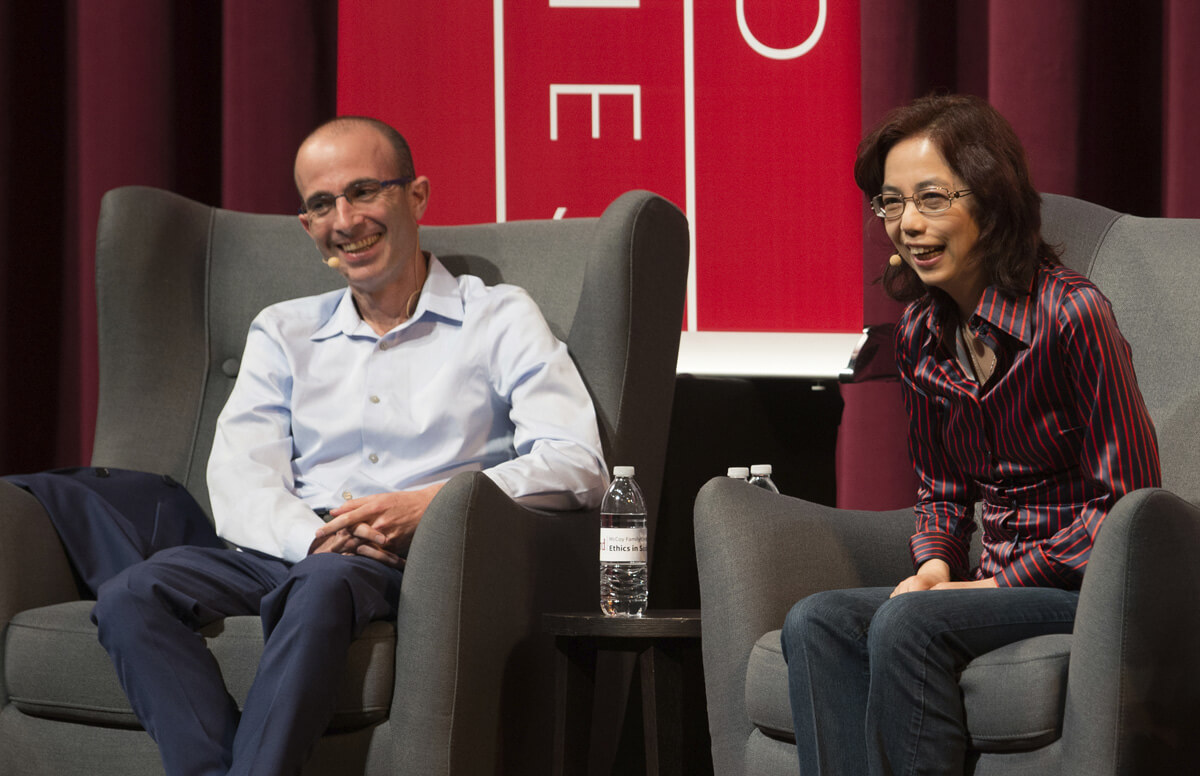
Author Yuval Noah Harari in conversation with HAI co-director Fei-Fei Li at Stanford University Credit: Steve Castillo New technology devices and apps pop up as abundantly as summer weeds here in Silicon Valley. Chip-enhanced products offer to satisfy almost every need imaginable. Prompts from your smart refrigerator tell you to buy more milk. With a voice command, music plays to facilitate meditation, thanks to your smart — always on — helper who listens for your next query from a canister on your kitchen counter; you know, the one with a woman’s voice and name. In this glut of offerings, how do you select what is truly useful from what is simply the latest “smart” thing? And by smart, I mean capable of following directions, solving problems, answering questions and learning on its own. Smart products depend on algorithms designed by engineers to create artificial intelligence , otherwise known as AI. And to be clear, AI is also critical to big data collection and industrial settings, but here we’ll focus on consumer applications. Predictions About AI If this all seems confusing to you, it may be because most of us are not engineers creating solutions for problems we didn’t know we had — until we heard about it in a tweet, an ad on our smart pad or TV or from our adult child or grandchild. How do we separate the helpful from the just trendy? How do we know if a thing aids our memory or just substitutes for our thinking? How do we evaluate whether a new app makes our life easier or simply supplants our own efforts in maintaining strong brains? For those of us who are Gen Xers, boomers or beyond, there’s the added question about which technologies we might embrace to facilitate healthy aging — […]
AIA 2019: Architosh awards 7th ‘BEST of SHOW’ honors for software and technology vendors at AIA National in Las Vegas
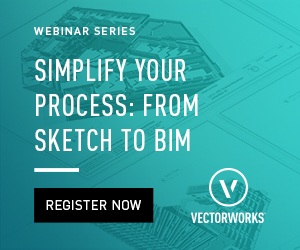
Architosh highlights BEST of SHOW honors to the most exciting and innovative software and digital technologies shown earlier this month at the 2019 AIA National Convention and Exhibition in Las Vegas. Advertisement Architosh announces its 2019 AIA National BEST of SHOW honors, recognizing and drawing attention to the most exciting and innovative digital technologies shown at the show. BEST of SHOW Introduction The BEST of SHOW awards are designed to recognize the most interesting and promising technologies, making an impact on architectural practice in the United States and globally. Winners of these small honors receive recognition and digital BEST of SHOW placards for display in marketing and promotions and permanent placement onto Architosh’s BEST of SHOW winner’s roster page. A companion “perspectives on BEST of SHOW” feature article—as in years past—further discusses and highlights the winning solutions within the context of a broader set of themes about technology in architectural practice and AEC in general. Anthony Frausto-Robledo, AIA, LEED AP, editor-in-chief, and Pete Evans, AIA, senior associate editor, Architosh, walked the show floor, attended technology-centric sessions and events, and spoke to various industry peers about the trends pushing technology forward in architecture. Brief Preface AIA 2019 seemed to naturally build on the Architosh BEST of SHOW analysis (Perspectives) from 2018 around the work of Carlota Perez which we will discuss in the upcoming perspectives article. The innovations and developments this year also reflected the AIA 2019 conference theme as well. We witnessed a lot of evidence showing technologies extending BIM, CDEs, VR/AR (XR), AI/ML, PIM (and more) to the broadest definition of stakeholders and at a finer level of data than seen before. This year’s awards reflect the collective, the inclusiveness, and diversity required, the granularity of data and information required to elevate design to its highest potential. Robert […]
For heart, health, AND happiness: Eat 10 or more servings of fresh fruits and veggies daily for emotional well-being

( Natural News ) Depressed people in need of a natural way to boost their mood for extended periods should try increasing the amounts of fruits and vegetables they eat every day. U.K. researchers reported that adding 10 or more servings of plant-based foods to the daily dietary intake of a person significantly improved his or her mental well-being. In a recent study, participants who ate more fresh foods experienced the same level of happiness as an unemployed person who finally got a job. The opposite also held: If people suddenly stopped eating fresh fruits and vegetables, they experienced the same level of anxiety and depression as a person who recently lost his or her spouse. “Our findings provide further evidence that persuading people to consume more fruit and vegetables may not only benefit their physical health in the long run, but also their mental wellbeing in the short run,” said lead researcher Neel Ocean of the University of Leeds . One of the co-authors of the study, he published these findings in the journal Social Science Medicine . (Related: Eat a healthy breakfast every day to reduce your risk of Type 2 diabetes, advise researchers .) Eating 10 servings of fruits and veggies boosts mood and mental health The Leeds researchers acquired data on the number of fruits and vegetables consumed by a cohort of 50,000 people from 2010 to 2017. They also evaluated information on the mental well-being of the participants. Participants shared the number of portions of fresh produce they consumed each day or each week. A cup of raw vegetables , half a cup of cooked veggies and a piece of fruit each counted as an individual portion. The power of the elements : Discover Colloidal Silver Mouthwash with quality, natural ingredients like Sangre de […]
Kemin Launches New Vision and Logo for the Future
(MENAFN – PR Newswire) Global ingredient manufacturer sets sights on sustainably transforming 80 percent of the world by 2042 DES MOINES, Iowa, June 16, 2019 /PRNewswire/ — Today Kemin Industries, a global ingredient manufacturer, unveiled its new global vision and logo to align the company strategically for 2042 and beyond. The new vision, "Kemin strives to sustainably transform the quality of life every day for 80 percent of the world with our products and services", lays the groundwork for strategic growth and priorities for the company with operations on six continents and a portfolio of more than 500 specialty ingredients. Previously, Kemin reached 3.8 billion lives – more than half the world’s population – every day through its products and services for humans, animals and pets. This vision was set in 1998, with a target goal of 2019. Kemin achieved the milestone two years early. By 2042, the world’s population will reach approximately 10 billion people. For Kemin to transform 80 percent of the world’s population – approximately 8 billion – people must encounter Kemin products five times each day. From sunrise to sunset, a person may have eggs for breakfast, feed their pet, wear jeans, take a supplement and purchase bakery items or meat at the market – all opportunities that include Kemin ingredients. "When we created our previous vision 20 years ago, it was ambitious and encompassed all aspects of our business. Since then, Kemin has grown ten-fold, and now the impact we can create is even greater," said Dr. Chris Nelson, President and CEO, Kemin. "By using our scientific expertise at the molecular level and continuing to innovate, we have the ability to be transformative on a global scale in a rapidly changing and growing marketplace. With a new vision to guide us, we are reenergized […]
5 Ways In Which Learning a New Language Benefits Your Brain

If you’re thinking about taking up a new hobby, try learning a new language, as it turns out that knowing more than one language can seriously boost your brain power. And if you already speak more than one language, know that you’re in luck, as bilingualism (or multilingualism) comes with quite a few fascinating cognitive benefits. For instance, research shows that speaking two or more languages improves your concentration, makes you better at problem-solving, and can even protect you from cognitive decline. There are 5 main cognitive benefits of knowing more than one language: 1. Prevents Cognitive Decline One of the most outstanding benefits of speaking more than one language is the ability to retain a young brain and delay cognitive decline. More specifically, research shows that bilinguals are less likely to suffer from dementia and Alzheimer’s , and they have a better chance of recovering after a stroke . A Canadian study showed that, on average, bilinguals are diagnosed with dementia 3-4 years later than monolinguals, and an Italian study found that Alzheimer’s patients who are bilingual are, on average, 5 years older than their monolingual counterparts. So, much like engaging in other cognitively-challenging activities like solving crossword puzzles or practicing musical instruments, knowing a second language can train your brain to be more resilient to adverse age-related changes. 2. Bilinguals Can Maintain Focus Better If maintaining focus and concentrating deeply on an important task can sometimes prove to be problematic, learning a new language could be helpful at training that skill. This is because people who know two and more languages have a more highly developed executive functioning , which involves the ability to focus on the important bits and ignore the unimportant ones. Brain imaging studies have shown that bilinguals have a more active and highly-developed […]
4 Extremely Legit Reasons Why Learning Is Good For Your Soul

Whether it’s ‘official’ studying or not, we should never stop learning. Just imagine if you what you know right now is all you’ll ever know? I can’t be the only one who finds that concept mildly terrifying. Don’t just take my word for it, science also says there are legit benefits to continued learning. 1. It Boosts Your Brain Function It’s not like you ‘lose’ your intelligence if you stop learning, but your brain gets used to being lazy. A study published in the Psychological Science Journal found that regularly putting time into learning a new skill for at least three months improved the memory of participants significantly and sustainably over the next year, compared to participants who simply engaged in social activities. According to Dementia Australia , scientific studies have also found that the challenge of learning new things helps to actually build new brain cells and strengthen the connection between them. So basically, you’ll have more in reserve should any be damaged. 2. It Broadens Your Knowledge Base I mean, duh. Despite being obvious it’s still a very good reason to keep learning. First of all, it makes you more interesting at parties/ in life when you can meaningfully join in more conversations because you know more. Then there’s the whole worldly aspect. It’s basically the best way to banish ignorance, IMO. Plus it’s just cool, there’s a whole wide world out there, why wouldn’t you want to know more about it? 3. It Improves Your Work Prospects A natural flow on from broadening your knowledge is the opening of more job prospects. Of course, for this to be true you’d want to closely consider what you were learning and tailor it to the skills you’re missing to get into your dream job. Maybe that means starting […]
Healthy Diet Habits to Improve Brain Function
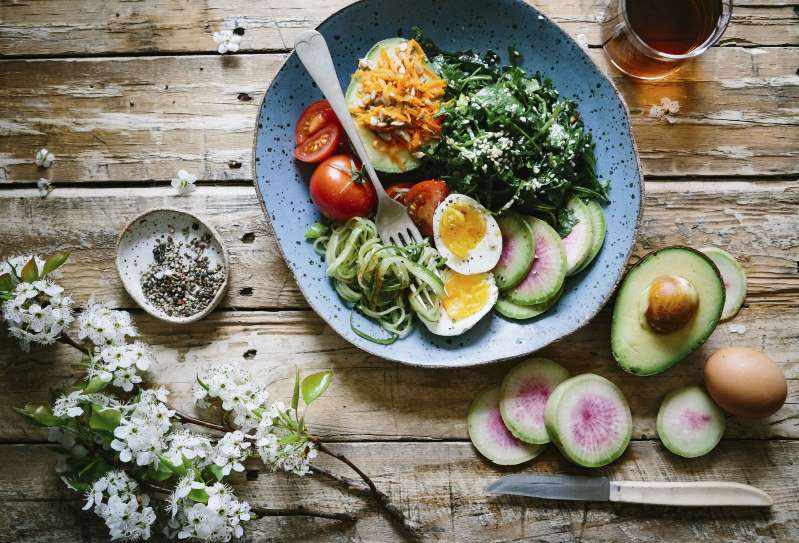
Human life span has been growing over the course of time. The usual life span was thirty to forty years, yet now people are becoming parents at this age. However, are we able to follow up on this and truly make our years count for something? Can the brain survive the passage of time? There are enormous amounts of research done to prove that, indeed, the body is the temple of our minds and that our physical health has much to do with a healthy mind. Here, we will discuss what simple measures you can take that will have an impact on your brain and not just your body. Improving Brain Function These days it is a very common misconception that cholesterol is somehow bad for your health and that you should eat more low-calorie foods, like vegetables and grains. This popular belief has become mainstream and many diet-conscious kitchens are turning to foods such as brown rice and whole grain bread. As a result, scientists have started investigating this matter. According to their research, it turns out that fat is not responsible for us being fat . So, what does this have to do with our brains? Well, obesity can lead to several health problems, but this also includes mental problems. Obesity can cause brain shrinkage that is connected to memory loss and, in the long run, dementia. Contrary to healthy dogma, it is carbs and sugars that make you fat and damage the heart and vascular health. In fact, cholesterol promotes the creation of new brain cells called neurogenesis and stimulates communication between neurons. This is why studies have found that individuals who consume more saturated cholesterol have a 36% lower risk of developing dementia. According to various studies, there is a strong connection between your gut […]
Improve Memory + 9 Other Rosemary Benefits Backed by Science
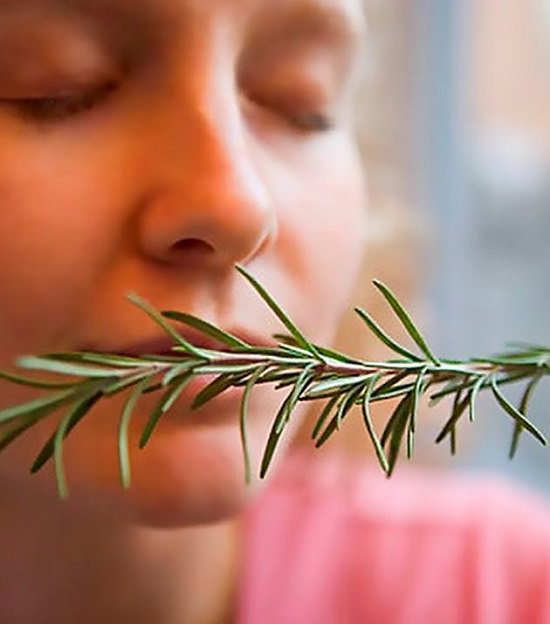
After knowing these Rosemary Benefits backed by medical science, you’ll start to admire this miraculous herb more than ever! Rosemary is one of the most popular culinary and medicinal herb native to the Mediterranean region. It’s also used for ornamental purposes due to its needle-like leaves and flowers. The flowers come in colors of purple, silver, pink, blue, and white, depending on the variety. Taste is somewhat bitter and astringent but is great for flavoring stews, soups, stuffings, sauces, roasts, and meat dishes. 1. Improves Brain Function This herb is miraculous as it can enhance your brain memory, intelligence, focus, and alertness. And, it’s proven in research! Here is the study that suggests that some herbs like sage, lemon balm, and rosemary are very potent and possess cognition-enhancing properties. Also, the essential oil of rosemary makes a person alert and improves mood, read more here . An experiment done on rats found that rosemary tea acts as an anti-depressant and reduces anxiety. One recent study conducted by the researchers from the University of Northumbria concluded that rosemary aroma could aid children’s working memory. Read that here ! 2. Rich in Antioxidants Antioxidants are essential for a healthy immune system, as they help the body to get rid of free radicals. Not only that but antioxidants also improves blood circulation and slows down aging. The rosemary is a good source of antioxidant-rich compounds and thus neutralizes free radicals and is excellent for overall health. 3. Improves Digestion In one trial , rosemary was added to animal feed to improve the digestibility of the feed, and it gave positive results. Although this claim has not enough scientific support, still you can use rosemary as a remedy for indigestion. If you are suffering from indigestion or heartburn. It’ll naturally cleanse your system […]
Life after Drew campaign draws to a close on today’s Father’s Day

Dayna Clarke speaks to KENNETH ABELA, father of Drew Abela who, along with his family, set up the ‘Life after Drew’ organ donation campaign following Drew’s death Why was the Life after Drew campaign set up? Three years ago, nearly to the day, my wife Sharon and I lost our son Drew after he suffered a brain haemorrhage. Before we were even asked to donate his organs, Sharon immediately requested that we do so. We set up ‘Life after Drew’ as my wife Sharon wanted to create something that would become a legacy synonymous with our son Drew’s name. Since we experienced this first hand, we felt that we needed to create more awareness on the subject of organ donation, also acting as an education campaign in which people were encouraged to discuss this sensitive subject whilst simultaneously paying tribute to Drew and the many, many people who – like him – gave others a second chance of life. How was the campaign received? The campaign was very well received, and the original target was to reach 100,000 people with our message. This target was overwhelmingly surpassed, since even one interview on TVM news has that level of viewership, let alone the 93 interactions that have been held over the past months. The campaign was a 360° one that included a multitude of television interviews, radio interviews, Facebook campaigns, Google campaigns, bus advertising, billboard advertising, newspaper interviews, a fine arts exhibition, a performing arts performance, promotional visits to Her Excellency The President of Malta and His Grace the Archbishop of Malta and visits to various schools and businesses, as well as online interviews. The business community, as well as the general public, were deeply touched by Drew’s big heart and came together genuinely offering their support in myriad ways, […]
Health & Fitness Issue 2019: Dance is all about connections, community and expression
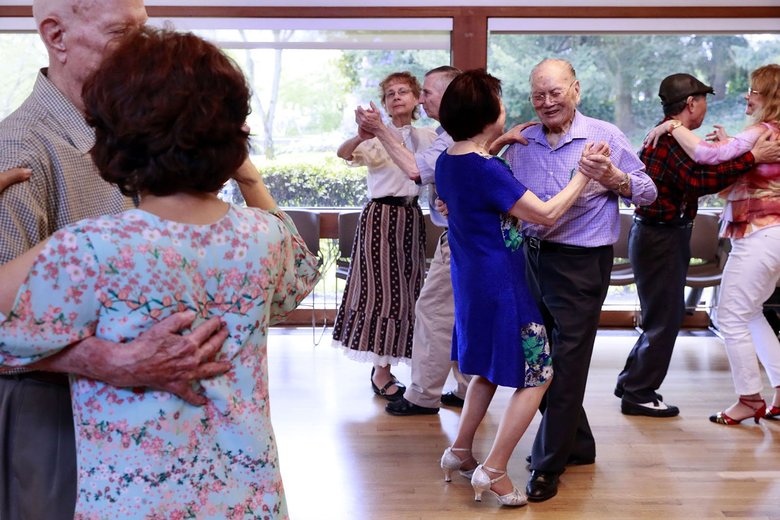
THE WEEKLY DANCE at the Renton Senior Activity Center once took place on Friday evenings, but the dancers didn’t like driving in the dark. So now they pack the center on Thursday afternoons, coming from Seattle and beyond to dance to the stylings of Bill the Dance Master, known for mixing up the tempo between a fast song and a slow swing, before moving on to a rumba or a country-and-western song. Bright light pours into the high-ceilinged room, where some dancers are dressed in spangly kitten heels and glittery skirts that twirl during spins. RELATED: The Backstory: How do we move in Seattle? It’s hard to count all the ways. Gene S. Moy, 102, learned to dance in 1941, when he was stationed in California for the U.S. Army. He learned the swing, waltz, cha-cha and rumba, among others, and danced the five years he served. He stopped dancing while raising four kids, but started again after he retired in the 1980s from his mechanic job at Boeing. “Once you learn how, you never lose it,” says Moy, who dances to every song and sits down in between. “It’s exercise you enjoy doing. You don’t feel tired.” The dancers range in age from their 50s to Moy’s century-plus, but almost no one is using a wheelchair, cane or walker. Credit the dancing, maybe. Advertising The reasons to dance are much more layered than health. Dance is a smile, and eye contact, and the fun in asking a new partner to dance to each new song. Dance is a toddler tap class, where the parents are just as joyful as their 2-year-olds. Dance is laughing at yourself when you fumble the footwork. Dance is sharing your story. Tracey Wong shares her stories and finds healing through the culture and […]
Boot camp for your brain: The key to unlocking your creative potential? The final part of a top neurosurgeon’s book reveals how to breathe, dream and sleep to unleash your true brain power
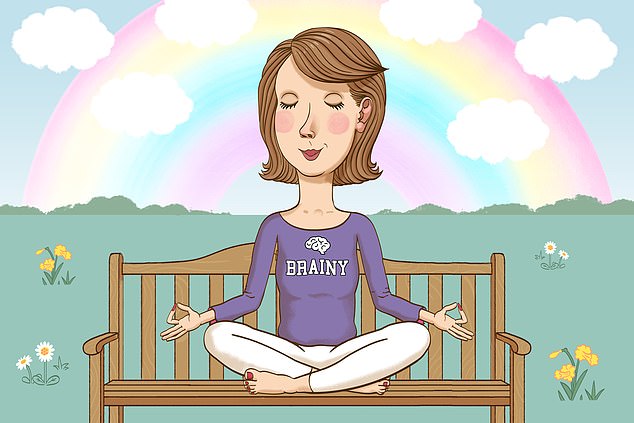
We like to think of our most advanced abilities — such as our intelligence or our creativity — as things that define us; things we personally brought into being. Nobody says that a person ‘has’ creativity; we say that he or she ‘is’ creative. But let a tumour grow between the frontal lobes of the brain, the part essential for any creative work, and we quickly learn that those great gifts were simply on loan. The workings of the human brain are so complex that we’re only just beginning to uncover some of their millions of secrets. But one thing we have discovered since I first became a brain surgeon 15 years ago is that the brain has a remarkable capacity to heal itself — just as your physical body does. Your brain can make a remarkable comeback following a devastating injury or illness, as we saw in Saturday’s Daily Mail. Nobody says that a person ‘has’ creativity; we say that he or she ‘is’ creative. But let a tumour grow between the frontal lobes of the brain, the part essential for any creative work, and we quickly learn that those great gifts were simply on loan Nobody says that a person ‘has’ creativity; we say that he or she ‘is’ creative. But let a tumour grow between the frontal lobes of the brain, the part essential for any creative work, and we quickly learn that those great gifts were simply on loan And if patients who’ve suffered brain cancer, a stroke or injuries can relearn how to walk, talk and regain their fine motor skills using techniques they practise regularly, why should anyone doubt that healthy people can’t push their brain-power into a higher gear, too? For while most of your brain cells are formed in the womb, […]
You Better Know These Three Natural Medicines To Help You In Several Ways
Pressbox (Press Release) – Vegan medications restore the energy harmony of people, alleviate physical pain and improve health from the inside. With the support of natural treatments based on reflection and deep relaxation, it ensures that natural medicines can perform early detection of such complex diseases like insomnia, cancer, depression, any kinds of deficiencies or stress. AOR in Urinary tract issues The stones in the kidneys are a subject that you should pay attention. One of the causes of kidney stones is that there are large amounts of calcium, oxalate and phosphorus in the urine. Drinking enough water and proper medicine are essential to prevent kidney stones. AOR Chanca Piedra made with ChancaPiedra, hydrangea and celery seed extract for quick and natural action. Help your kidneys are clean, including the gallbladder, liver and eliminates what you need in the urine. AOR in Vitamin source Coenzyme is a molecule that uses the nutrients that you ingest to produce energy and to which health benefits are attributed such as enhancing the immune system or slowing down ageing. AOR Methylcobalamin Ultra coenzyme improves the body’s natural defences and helps protect against metabolism. It is mainly for those whose body is unable to produce natural vitamin B12. But, you can use it as strong immunity builder. AOR in stress relief Ginseng and RhodiolaRosea have been used in traditional medicine for centuries with excellent results.Ginsengand RhodiolaRoseahave beneficial antioxidant and anti-inflammatory properties for your body. They improve the physical state of mood, treat impotence and anxiety as well as favours psychomotor function. AOR RhodiolaRosea with Ginseng will help improve brain functions such as memory, behaviour and attitude. It will enhance your daily Performance to Deal with Stress and Anxiety. Why Ortho Mind? Ortho Mind is the most trusted online store with years of professional experience […]
Here’s what gets lost when we rely on GPS

It has become the most natural thing to do: get in the car, type a destination into a smartphone, and let an algorithm using GPS data show the way. Personal GPS-equipped devices entered the mass market in only the past 15 or so years, but hundreds of millions of people now rarely travel without them. These gadgets are extremely powerful, allowing people to know their location at all times, to explore unknown places and to avoid getting lost. But they also affect perception and judgment. When people are told which way to turn, it relieves them of the need to create their own routes and remember them. They pay less attention to their surroundings. And neuroscientists can now see that brain behavior changes when people rely on turn-by-turn directions. In a study published in Nature Communications in 2017, researchers asked subjects to navigate a virtual simulation of London’s Soho neighborhood and monitored their brain activity, specifically the hippocampus, which is integral to spatial navigation. Those who were guided by directions showed less activity in this part of the brain than participants who navigated without the device. “The hippocampus makes an internal map of the environment and this map becomes active only when you are engaged in navigating and not using GPS,” Amir-Homayoun Javadi, one of the study’s authors, told me. The hippocampus is crucial to many aspects of daily life. It allows us to orient in space and know where we are by creating cognitive maps. It also allows us to recall events from the past, what is known as episodic memory. And, remarkably, it is the part of the brain that neuroscientists believe gives us the ability to imagine ourselves in the future. Studies have long shown the hippocampus is highly susceptible to experience. (London’s taxi drivers famously […]
Is High-Intensity Exercise More of a Mood Booster Than Steady-State Cardio?
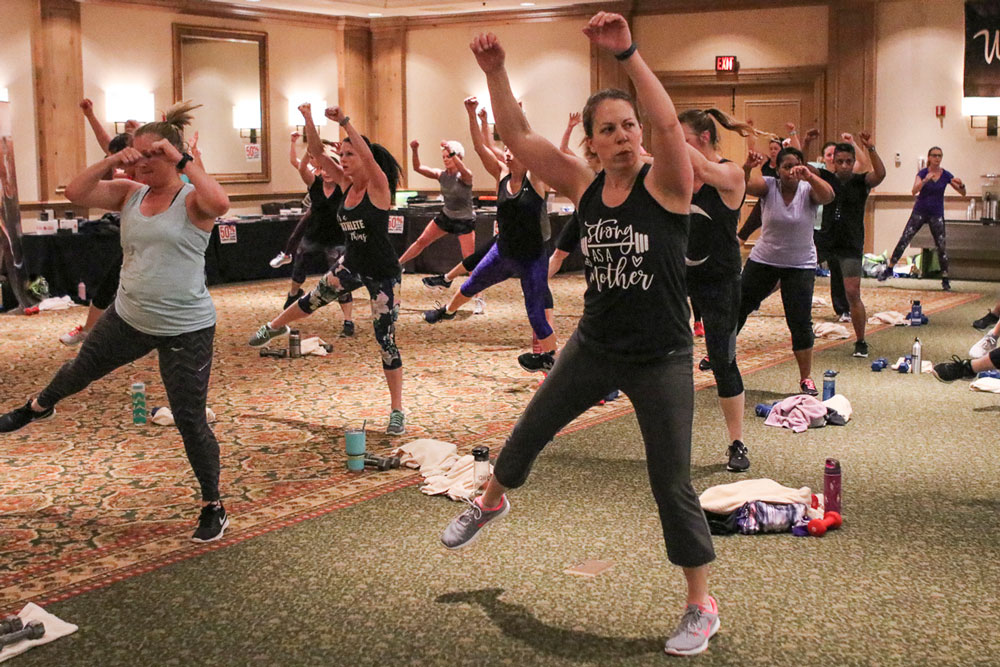
Have you ever launched into a workout feeling slightly down or maybe a little “stressed out?” But by the end of the workout, your mind had cleared and your mood has lifted. That’s the magic of exercise! Research shows regular physical activity benefits brain function in more than one way. Not only can it spur the growth of new nerve cells in part of the brain involved in memory, a process called neurogenesis, it also boosts mood. Yes, the “feel good” effect of exercise is real, and it’s one reason people keep doing it. Beyond the known health benefits, exercising regularly helps you maintain a healthy state of mind and better deal with stress. We know that longer-term exercise has physical and mental health benefits. But what about a single, vigorous bout of exercise, a high-intensity interval training session? What impact does it have on mood? According to some research, 30 minutes of high-intensity exercise rivals anti-depressant medications for lifting the mood of people suffering from depression. It’s not clear why intense exercise boosts mood, but a theory is that the endorphin release you get from a kick-butt workout has beneficial effects on the brain and on mood. What’s so special about endorphins? They’re natural chemicals your brain produces that have a pain-relieving, calming effect. Your brain makes more endorphins when you’re in pain or are under stress, as during challenging exercise. Fortunately, it’s a good kind of stress! The purpose of endorphin release is to mask the discomfort and ease the pain of working your body to the max. In fact, these chemicals are similar to opioid medications people take for severe pain. They also bring about feelings of calm, peace, and pleasure. So, it’s not hard to see why exercise is a mood booster. It’s also not […]
Kemin launches new vision and logo for the future
Kemin Industries , a global ingredient manufacturer, has unveiled its new global vision and logo to align the company strategically for 2042 and beyond. The new vision, “Kemin strives to sustainably transform the quality of life every day for 80% of the world with our products and services,” lays the groundwork for strategic growth and priorities for the company with operations on six continents and a portfolio of more than 500 specialty ingredients. Previously, Kemin reached 3.8 billion lives – more than half the world’s population – every day through its products and services for humans, animals and pets. This vision was set in 1998, with a target goal of 2019. Kemin achieved the milestone two years early. By 2042, the world’s population will reach approximately 9 billion people. For Kemin to transform 80% of the world’s population – approximately 7.2 billion – people must encounter Kemin products five times each day. From sunrise to sunset, a person may have eggs for breakfast, feed their pet, wear jeans, take a supplement and purchase bakery items or meat at the market – all opportunities that include Kemin ingredients. “When we created our previous vision 20 years ago, it was ambitious and encompassed all aspects of our business. Since then, Kemin has grown ten-fold, and now the impact we can create is even greater,” said Dr. Chris Nelson, president and CEO, Kemin. “By using our scientific expertise at the molecular level and continuing to innovate, we have the ability to be transformative on a global scale in a rapidly changing and growing marketplace. With a new vision to guide us, we are re-energized to reach more people with our products and services to truly transform the quality of life around the world.” Along with this vision, the new Kemin logo reflects […]
Sleep is Your Superpower

We’re sorry: video playback cannot be initialized on your browser at this time. Load this talk on ted.com Let me start with the brain and the functions of learning and memory, because what we’ve discovered over the past 10 or so years is that you need sleep after learning to essentially hit the save button on those new memories so that you don’t forget. But recently, we discovered that you also need sleep before learning to actually prepare your brain, almost like a dry sponge ready to initially soak up new information. And without sleep, the memory circuits of the brain essentially become waterlogged, as it were, and you can’t absorb new memories. So let me show you the data. Here in this study, we decided to test the hypothesis that pulling the all-nighter was a good idea. So we took a group of individuals and we assigned them to one of two experimental groups: a sleep group and a sleep deprivation group. Now the sleep group, they’re going to get a full eight hours of slumber, but the deprivation group, we’re going to keep them awake in the laboratory, under full supervision. There’s no naps or caffeine, by the way, so it’s miserable for everyone involved. And then the next day, we’re going to place those participants inside an MRI scanner and we’re going to have them try and learn a whole list of new facts as we’re taking snapshots of brain activity. And then we’re going to test them to see how effective that learning has been. And that’s what you’re looking at here on the vertical axis. And when you put those two groups head to head, what you find is a quite significant, 40-percent deficit in the ability of the brain to make new memories […]
Boot camp for your brain: Want to be happier, feel younger AND stave off dementia? Then try a leading neurosurgeon’s brilliantly simple workouts for your little grey cells
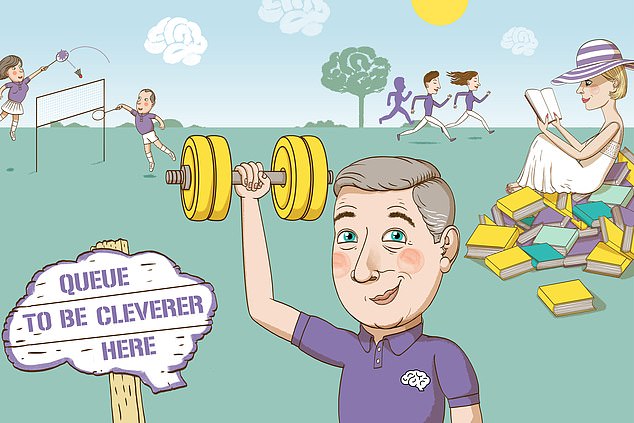
Less than 20 years ago, people thought that running or going regularly to the gym was for fitness freaks. But step outside your front door today and you can barely move for joggers and cyclists, while it’s entirely normal to be a member of a gym. In short, most people understand that their physical wellbeing is largely down to themselves, and that it can be vastly improved if only they choose to do so. But what most don’t realise is that exactly the same is true of their brain fitness, too. Just as our bodies age, so do our brains — with consequences that range from the irritating, such as forgetting why we came into a room, to the terrifying, such as dementia. However, just as with our physical health, there are a range of options available to us to improve our brain health. In fact, the single most important discovery neuroscientists have made since I first became a brain surgeon 15 years ago is that your brain’s health is largely within your own control. The brain has a remarkable ability to heal itself. We already know, for example, that every brain can make a comeback following a devastating illness or injury. Neurosurgeons like myself witness the living proof in patients who’ve experienced strokes, injuries or brain cancer yet who manage to make incredible recoveries. Neuro gym: The pecking order When you’re trying to remember things, use the lesson of the pecking pigeons (see main article) and intentionally practise area-restricted searches. Diligently scour your brain, first for categories and then for items in each category. This easy exercise takes less than five minutes — all you need is a piece of paper and a pencil. Set a timer for two minutes then write down the names of as many […]
